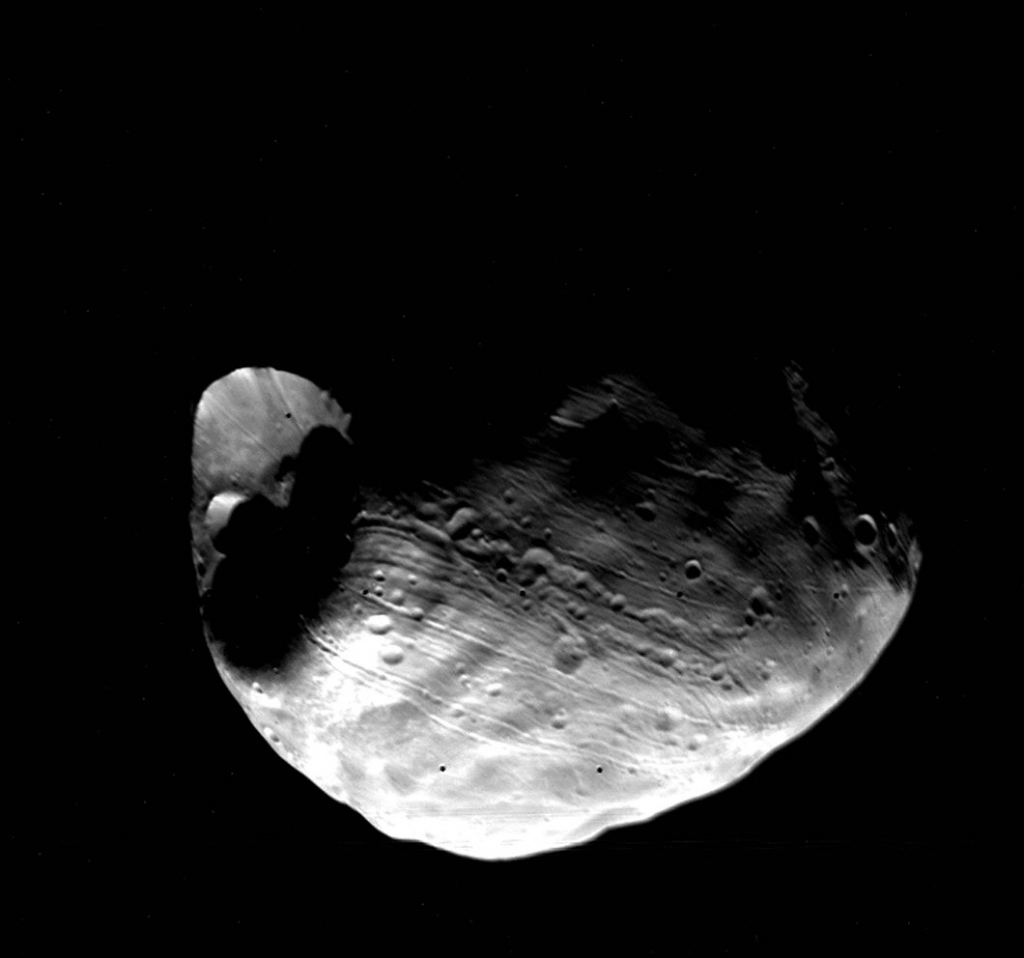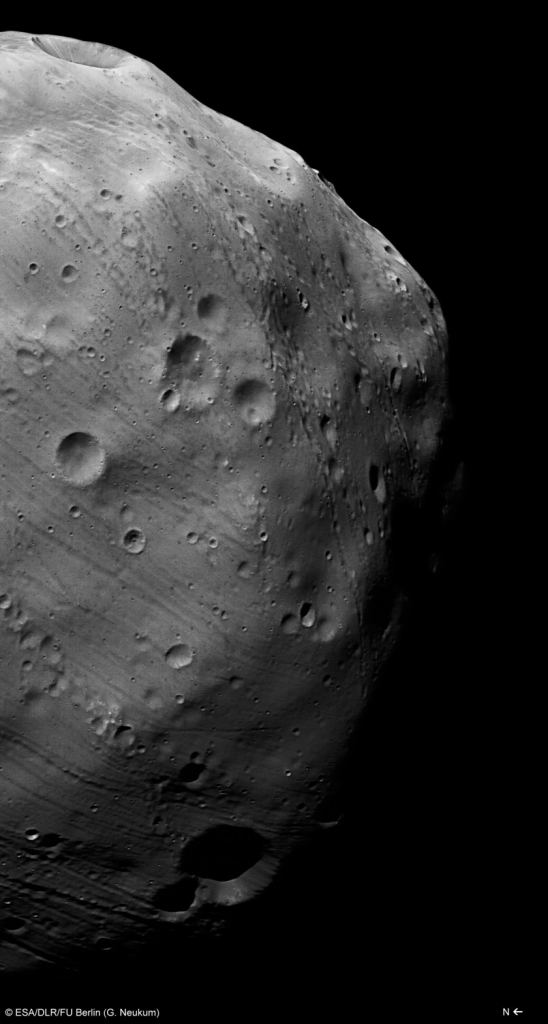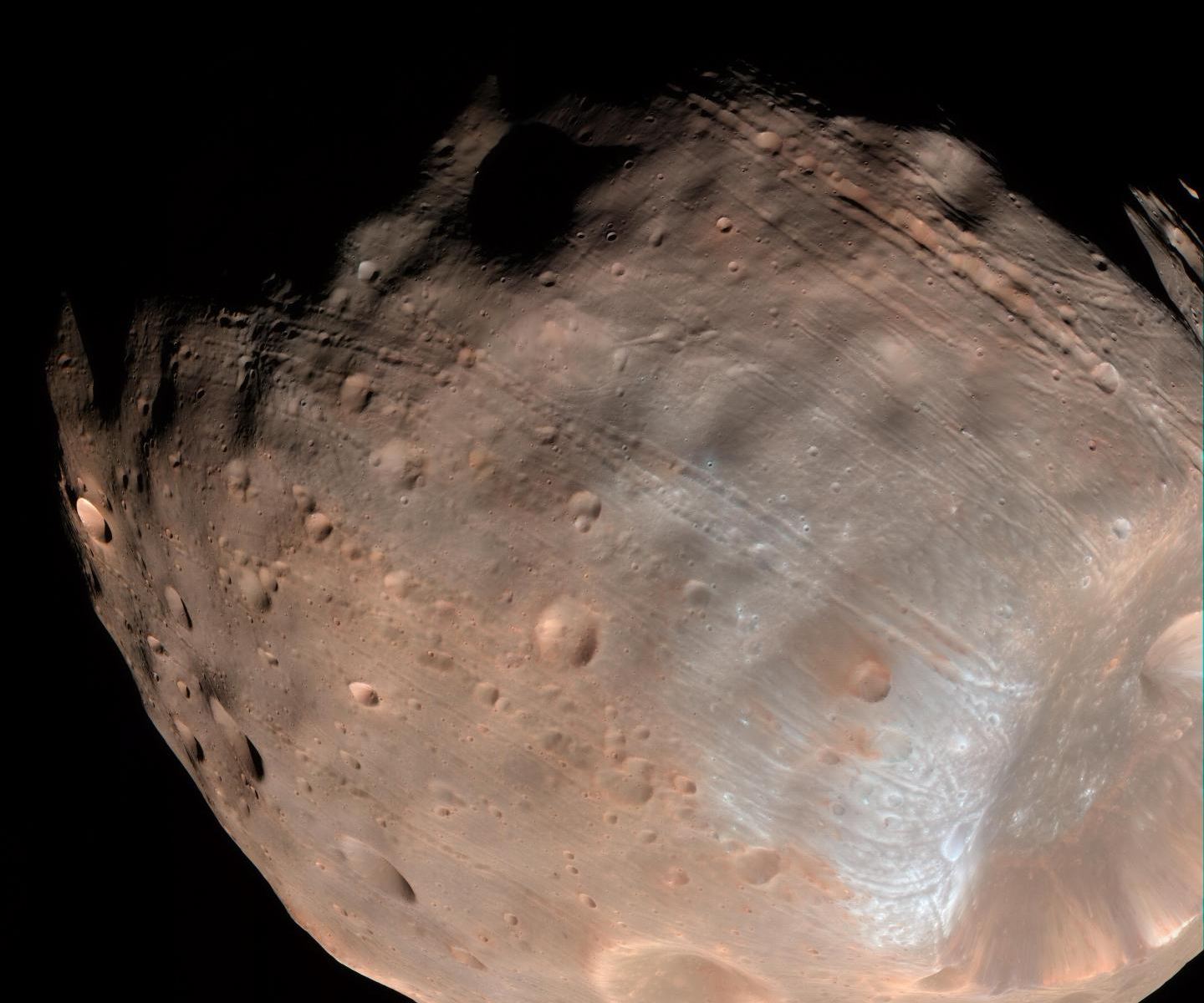Back in the 1970s, NASA’s Mariner and Viking Missions were sent out to explore other planets in our Solar System. All three of them (there were two Viking missions) captured images of Mars’ moon Phobos during their travels. They were our first images of the tiny, potato-shaped moon, and the images held a mystery: strange linear grooves on the moon’s surface.
There’s been a debate about what caused these grooves. Some researchers suggested that Phobos was showered with debris from large impacts, and the debris carved the grooves into the surface. Others thought that the grooves might be signs of structural disintegration as Mars’ gravity tears the little moon apart. Others have said that there must be a connection between the Stickney impact and the grooves.
A new study strengthens the idea that the Stickney impact and the grooves are related.

The study is from Kenneth Ramsley and James Head, both of Brown University, with Ramsley leading the study. They used computer models to simulate the movement of debris from the Stickney crater, a huge gash on one end of Phobos’ oblong body. Their models show that boulders rolling across the surface in the aftermath of the Stickney impact could have created the puzzling patterns of grooves seen on Phobos today. Head was one of the first to propose this idea back in the 1970s.
Phobos is a small moon, only 27 km wide at its widest point. Compared to that, the Stickney crater (named after the wife of Phobos discoverer, Asaph Hall) is enormous. At 9 km across, it dominates the tiny moon. Stickney is so big, it has another smaller crater inside it.

An impact the size of Stickney would have ejected tons of boulders away from the surface, and when they fell back, they would have caused the grooves. At least that’s what the simulations show. But there are a couple sticking points.
Intuition might tell us that all of the grooves should radiate from the Stickney impact, but they don’t. Some of the grooves cross on top of other grooves, which mean they must have been created at different times. And some grooves run right through the Stickney crater, meaning the crater had to be there already when the grooves formed. The surface of Phobos also has a so-called dead spot where there are no grooves.
“We think this makes a pretty strong case that it was this rolling boulder model accounts for most if not all the grooves on Phobos.” Kenneth Ramsley, Brown University.
The pair of scientists built their computer model with detailed data that took into account Phobos’ shape and topography, as well as its gravitational environment, rotation and orbit around Mars. “The model is really just an experiment we run on a laptop,” Ramsley said in a press release. “We put all the basic ingredients in, then we press the button and we see what happens.”

According to Ramsley, he had no expectations of what the model would show. But he was surprised at how well the model re-created the grooves on Phobos. It showed that the boulders tended to align themselves in sets of parallel paths, which agrees with the sets of parallel grooves on Phobos. The models also provide a potential explanation for some of the other more puzzling groove patterns.
On a larger body, boulders from an impact would roll for a while before gravity and friction slowed and stopped them. But on Phobos, some of the boulders would have rolled and bounced all the way around the small moon. This explains why the grooves don’t conform to an ejecta pattern like on larger bodies. Once a boulder has circumnavigated the moon, its grooves are no longer aligned to the crater.
The model explains other facets of Phobos’ grooves. Since the boulders could have rolled around the moon and kept going, they could have easily crossed grooves created earlier and created superposed grooves. They could have even rolled all the way back to their starting point, the Stickney crater itself, creating the grooves seen inside the crater.
But what the groove-free dead spot?
The area without grooves turns out to be a lower elevation area surrounded by higher elevation “lips”. The simulation shows that boulders would have hit those lips and been launched above the surface, landing on the other side of the depression and leaving it groove-free. “It’s like a ski jump,” Ramsley said. “The boulders keep going but suddenly there’s no ground under them. They end up doing this suborbital flight over this zone.”
Ramsley says that the model answers some of the important questions about the grooves on Phobos, and places the Stickney impact at the center of it all. “We think this makes a pretty strong case that it was this rolling boulder model accounts for most if not all the grooves on Phobos,” Ramsley said.

